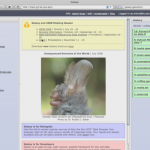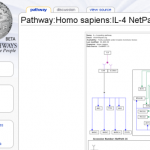The new Lancet has a paper from our own group as well as another one from ISAAC. We have already suggested earlier that asthma is a iatrogenic disease- the ISAAC paper now confirms at least the long suspected association with paracetamol use – gratulations to my London friend who had been working so long on this hypothesis. The accompanying editorial puts in into context:
Furthermore, although many important potential confounders were included in multivariate analyses, confounding by underlying respiratory disease, differences in hygiene, and use of other antipyretics might also explain the findings.
To put it more on a general level – more iatrogenic factors cannot be excluded, yea, yea.
CC-BY-NC Science Surf
accessed 21.12.2025



